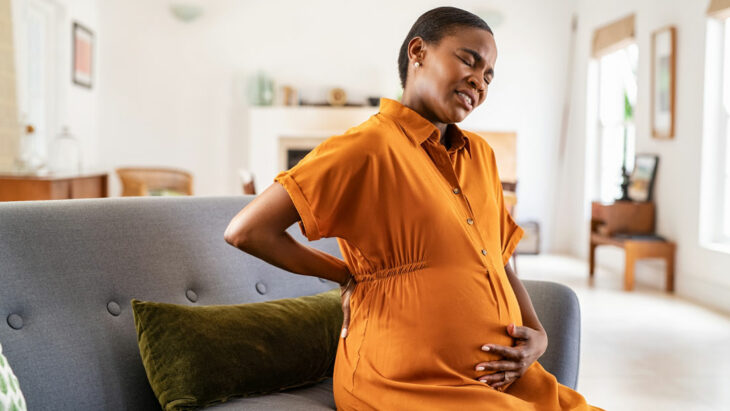Awaiting the birth of a child is a joyous time; but for many expectant mothers, pregnancy comes with some unwelcome side effects, including varicose and spider veins. Let’s take a deeper look into how, why, and when venous insufficiency can make what should be a happy time unpleasant, or even painful.
As if pregnancy and childbirth weren’t difficult enough, why, oh why, must varicose and spider veins affect about 40% of pregnant women?
During pregnancy, changes in the body’s vascular and hormonal systems can cause vein disease for numerous reasons:
- The amount of blood increases 30-50% during pregnancy. This extra blood is still confined to the same number of vessels, so the added volume increases vascular pressure, causing the veins to stretch and valves to strain.
- As progesterone levels rise, veins and vessels relax to allow for the extra blood volume. This further allows the veins to enlarge and makes blood susceptible to pooling; valves may malfunction by refluxing.
- The growing uterus presses on the inferior vena cava, the body’s largest vein, which in turn increases pressure in the leg veins.
- Mothers are more likely to develop varicose and spider veins if other members of their family have had them.
- Multiple pregnancies, carrying twins or multiples, and standing for long periods also can make you more susceptible.
Now that we know the “why,” how can pregnant women combat the development of varicose and spider veins? With a few tips and tricks, venous insufficiency may be preventable.
- Low-impact exercises: One of the best ways to avoid vein disease is to get the blood pumping. Physical exercise like walking, biking, swimming and yoga are great ways to stimulate blood flow without increasing stress on the joints or vascular system. Whenever you’re beginning a new exercise routine, talk with your OB/GYN to ensure safety.
- Repositioning: It’s advised to avoid sitting and standing for long periods, which restricts efficient blood flow. If working a sedentary job or traveling, take short breaks to walk around and do toe-heel raises to stimulate blood flow.
- Leg elevation: Pregnancy is a tiring process, and expectant moms need extra rest. While resting, elevate your legs above your heart and avoid crossing your legs. This helps reduce vascular resistance and promotes blood flow.
- Left-side sleeping: Sleeping on your left side can help relieve the stress and pressure from the uterus onto the inferior vena cava.
- Compression therapy: No one loves compression stockings, but check out these benefits: reduces swelling, relieves aches and pains, supports relaxed vessels, reduces stress on the valves, promotes of effective valve function, decreases venous inflammation and diminishes blood pooling and reflux.
- Comfortable clothes and shoes: Avoiding tight, restrictive clothing and shoes is a great way to promote circulation during pregnancy.
If you start to see pregnancy-related varicose and spider veins developing, there’s good news: Most of these veins will improve after giving birth, particularly if you didn’t have any before pregnancy. This is why vein specialists don’t treat venous insufficiency during pregnancy.
If those unsightly, often painful, veins persist, there are a variety of simple, noninvasive ways to treat them. Talk with a board-certified vein specialist, as treatment is recommended before subsequent pregnancy. Treating ongoing varicose and spider veins not only provides relief, but also prevents complications in future pregnancies. If left untreated, symptoms of venous insufficiency will progressively intensify with each pregnancy.
With a understanding of the relationship between vein disease and pregnancy, women can be more prepared for what to expect throughout their pregnancy and postpartum journey.



